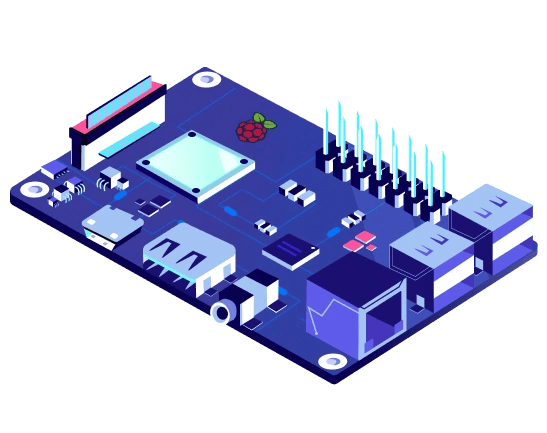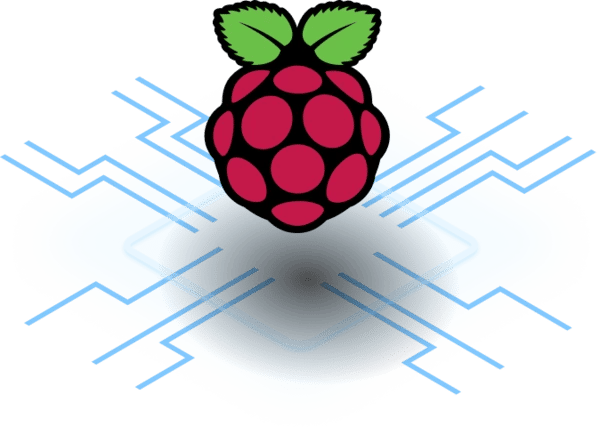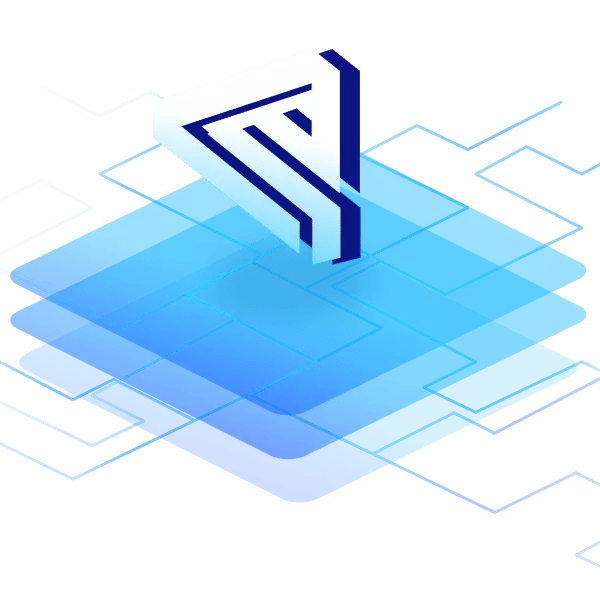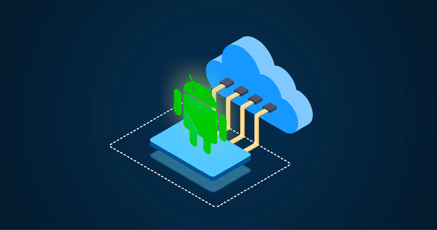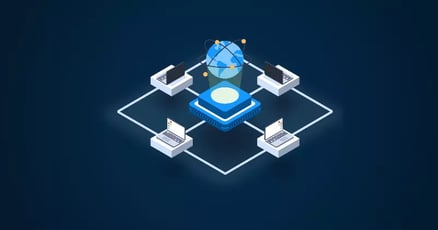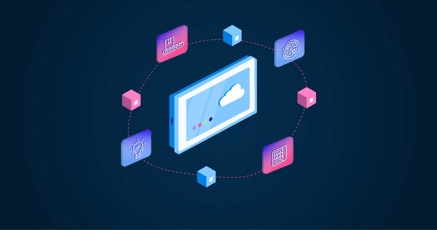Raspberry Pi has become the device of choice for many fleet managers, operating everything from Point-of-Sale (POS) devices, vending machines, ticket sale machines, treadmills, access control machines, and dozens of other devices. The Raspberry Pi is a robust computer that costs very little and can have numerous operating systems installed on it, including Android, a popular choice.
One aspect that doesn’t come out of the box, though, is Raspberry Pi fleet management. Without a cloud-based Raspberry Pi fleet management system in place, device updates must be done on-site, requiring many additional man-hours. Errors in the code can mean devices going offline with no way to recover them in the absence of a Raspberry Pi remote management solution.
In this article, we will discuss the value of Raspberry Pi fleet management, and how to implement Raspberry Pi fleet management easily.
Why is Raspberry Pi device management needed?
Raspberry Pi fleet management is an essential aspect of operating a fleet of devices. Having access to all devices in a central hub, such as the emteria Device Hub, means that full Raspberry Pi remote device management can be carried out from any single computer, so long as it has an internet connection and a browser.
Raspberry Pi fleet management is required to:
- Reduce man-hours in updating devices
- Provision devices properly before deploying
- Comply with stringent EU laws that enforce the need for regular software updates
Let’s take a look at one extremely efficient Raspberry Pi fleet management strategy.
Raspberry Pi remote device management
The best strategy for Raspberry Pi fleet management is to do it all through a cloud-based solution. Android is an excellent choice for implementing Raspberry Pi device management because of its built-in support for Mobile Device Management, or MDM. It enables to manage Android devices, such as raspberry devices, from a central hub.
But Android doesn’t ship with this functionality out of the box. That’s why emteria built emteria.OS which is a version of Android that does offer Raspberry Pi remote device management out of the box and which can be installed easily on a Raspberry Pi.
Why Android is the better choice for Raspberry Pi remote device management
Android is by far not the only OS that can be installed on a Raspberry Pi device. When deciding on both the hardware and software to be used for a device, companies must consider several challenges:
- Overall cost
- The hardware’s efficiency
- The operating system—whether it can be installed on that hardware setup, how easy it is to update, if there are drivers for it, and how user-friendly the OS is.
Some of the other OSes that can be used on a Raspberry Pi include:
- Balena (Linux)
- JFrog connect (Linux)
- Stock Android (it needs to be modified to work on a Raspberry Pi)
Android has numerous benefits over its competitors. It has a familiar user interface that users have become accustomed to due to the ubiquity of Android devices in use. It has great touch-screen functionality. And it lends itself easily to Raspberry Pi fleet management because of its built-in support for Mobile Device Management (MDM service).
The infrastructure required to remotely manage Raspberry Pi
It is not entirely correct to say that Android comes prepackaged with MDM features. Without getting too technical, the best way to explain this is to say that these features enabling the benefits of MDM are possible because of how the internal Android code has been designed. But they don’t come fully programmed straight out of the box for business purposes, such as retail MDM or MDM manufacturing. They certainly don’t come out of the box for Raspberry Pi remote device management.
For anyone seeking Raspberry Pi remote device management, specific code needs to be written for the Android OS that will run on that Raspberry Pi device.
But there’s a much larger picture at play when attempting Raspberry Pi fleet management—so-called IoT OTA updates or Over-The-Air updates.
OTA is when updates get pushed to a fleet of devices through the internet. Whenever your phone receives a new update, that update is carried out using OTA functionality. The same should be true in Raspberry Pi fleet management.
Additionally, Raspberry Pi device management updates should be able to:
- Be carried out in batches
- Be rolled back should an update fail
What many people don’t understand is that the infrastructure required to carry this out is huge. To successfully carry out OTA remote device management, Raspberry Pi fleets should be connected to that infrastructure.
That OTA infrastructure requires functionality for:
- Automatic builds of the latest OS version
- Code-signing
- Uploading of the new builds so they are ready to release
- Update management
- And numerous other features
A properly configured backend infrastructure is indispensable to manage Raspberry Pi remotely and to properly handle OTA updates.
How to remotely manage Raspberry Pi
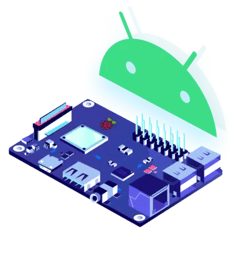
Install Android
To enable Raspberry Pi remote management on your devices, the first step is to install Android on each of those devices. Using emteria’s custom embedded Android operating system, this is a piece of cake, and full instructions on how to do it can be found in our Android on Raspberry Pi tutorial.
Once this is done, you can begin setting up the devices for full Raspberry Pi device management functionality.
Select the Raspberry Pi remote device management plan
If you simply wish to test remote device management Raspberry Pi, free tiers are available on the emteria website. That means you could test Raspberry Pi remote device management on a subset of devices without paying anything, and then upgrade to the very affordable higher tiers to manage entire fleets.
After installing Raspberry Pi, select the MDM (Mobile Device Management) plan which lets you add three devices for free.
Provision the devices
“Provisioning” raspberry devices means preparing them for first use. One of the benefits of proper Raspberry Pi fleet management is that this device provisioning can be done entirely remotely.
Emteria’s Device Hub provides full functionality to provision a Raspberry Pi device. Through an easy-to-use interface, you simply select the options you want each device to have, the password policies, the apps, etc. Those options will be automatically pushed to the respective devices on first-boot. There is no need to manually configure each device, either for first-use or for future updates, due emteria’s built-in Raspberry Pi device management functionality.
Devices can also be provisioned in groups, such as separating fleet devices by location, or maintaining a separate group of just a few devices for testing purposes. These groups can have different policies applied to them via the Device Hub to ensure compliance with location-specific laws or branch-specific requirements, such as device language options.
Remote Raspberry Pi device management
Once the devices have been provisioned, all further Raspberry Pi fleet management can be taken care of through the Device Hub’s MDM section.
The MDM section of emteria’s Device Hub is where fleet managers will spend most of their time when engaged in Raspberry Pi fleet management. Emteria has designed its Hub so that there is always a constant connection between the device and the Device Hub so long as the device is connected to the internet. A fleet manager simply needs access to a browser from anywhere in the world to be able to view the status of the fleet.
In the device overview section, a fleet manager can see which devices are connected to the internet and which aren’t. If a Raspberry device is not online, the Device Hub shows when it was last online by hovering over the red circle as shown in the image below.

If a device is not following the policies assigned to it, this is also indicated through a red flag and a fleet manager can take swift action to fix it so as to stay in compliance.
The Device Hub gives full and complete information about each Raspberry device and allows the fleet manager to issue preset commands, or custom commands, to update or modify virtually anything on that device. Fleet managers can change settings; install, update, or uninstall apps; modify policies, and so on, all through the Device Hub's interface.
So long as the Raspberry device is connected to the internet, it will take on the settings and policies pushed to it from the emteria Device Hub.
Conclusion
Raspberry Pi has become an integral part of the Internet of Things (IoT). It is robust yet affordable and can be used for a wide variety of devices.
Raspberry Pi fleet management is the missing ingredient in keeping these devices running well and regularly updated. The larger the fleet gets, the more time-consuming and costly it becomes to manually deal with software bugs or device policy updates. Remote Raspberry Pi device management becomes utterly crucial for the financial survival of the company operating the fleet.
This is where emteria’s Device Hub comes into play. Built on top of a strong infrastructure that handles OTA updates expertly, and which supports numerous other remote management features, the emteria Device Hub is the perfect solution for any Raspberry Pi fleet management needs.
Manage Pi-based products remotely
